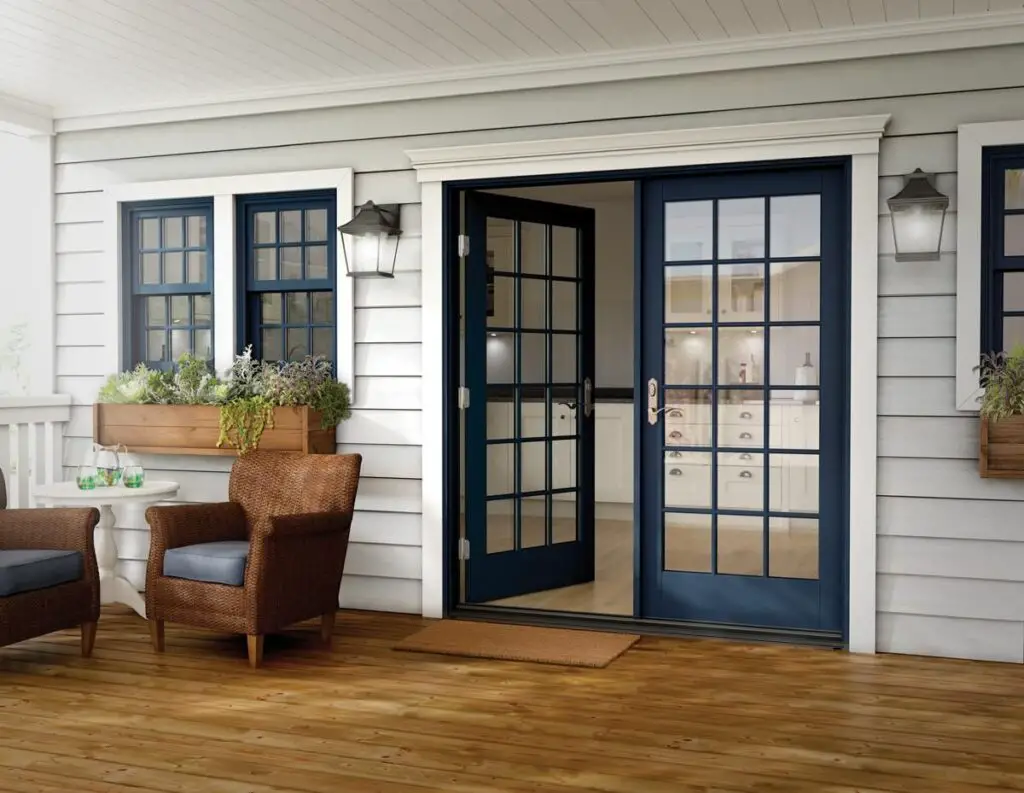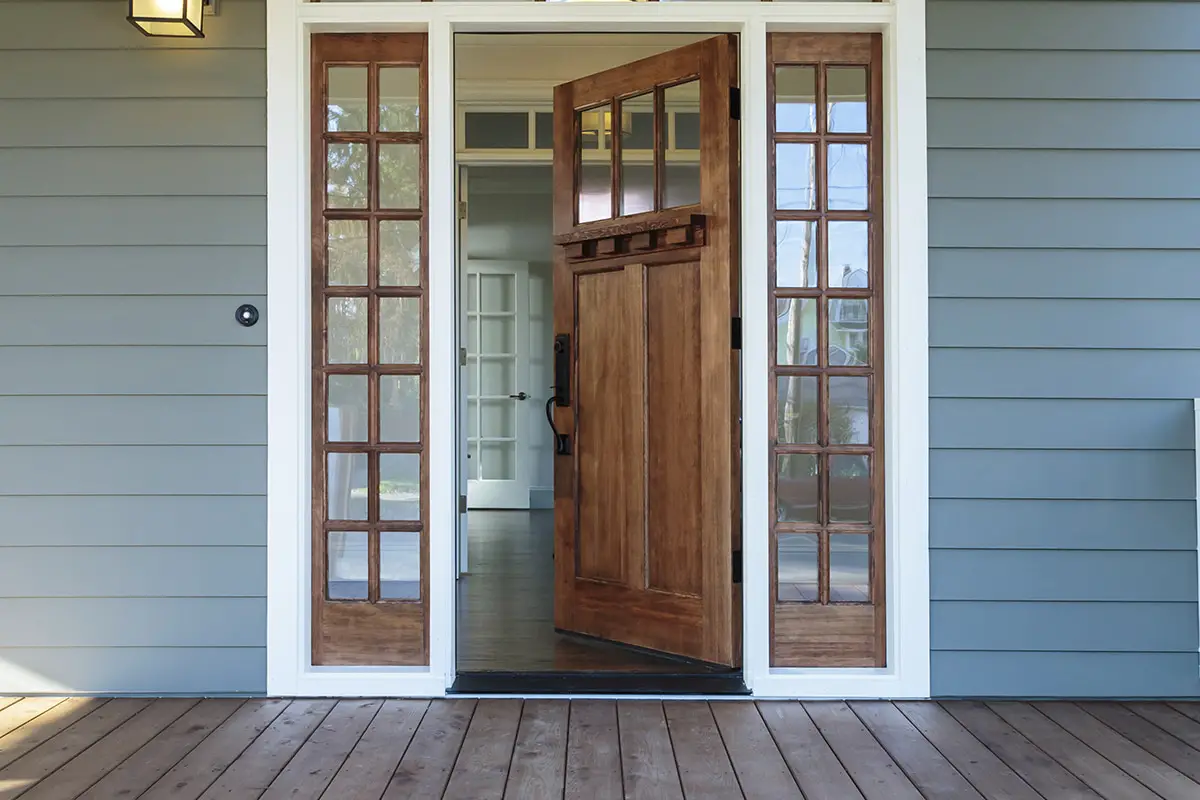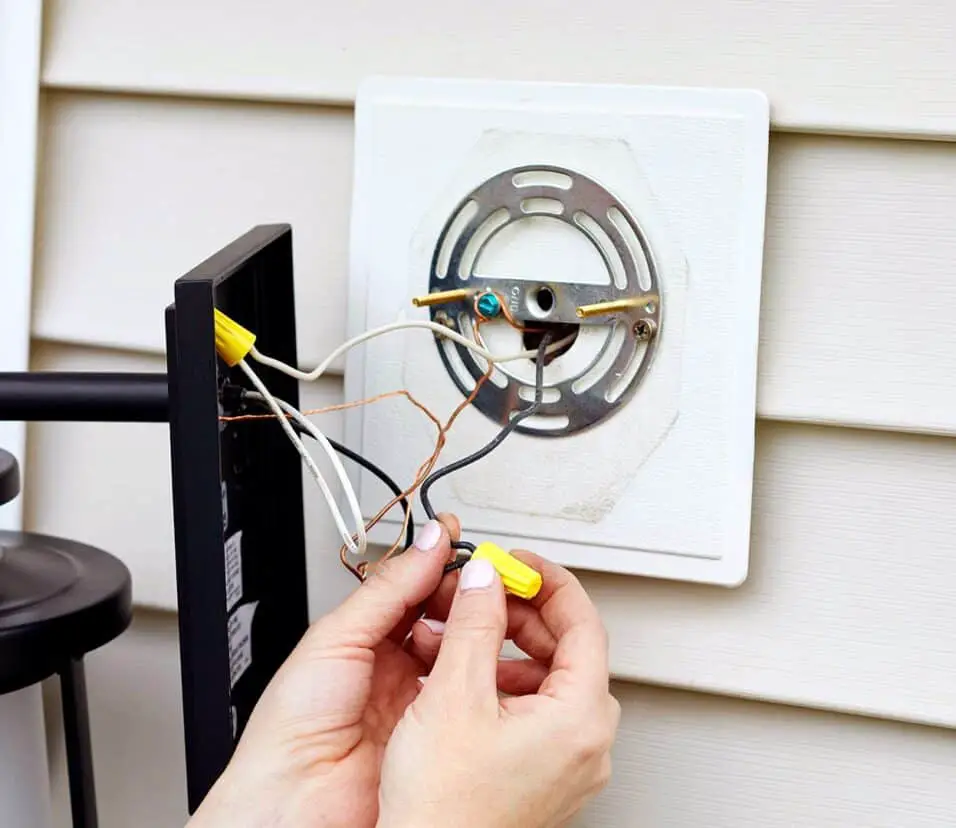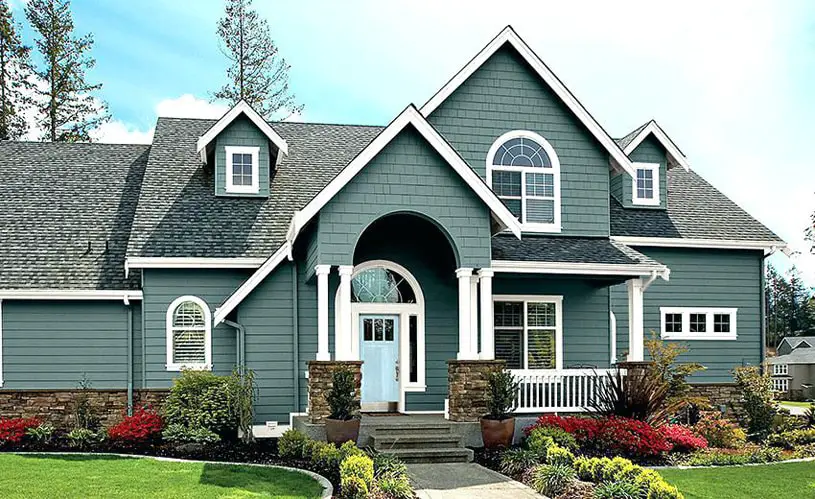How Long To Leave Exterior Door Open After Painting
Introduction
How Long To Leave Exterior Door Open After Painting: The transformation of an exterior door through a fresh coat of paint is a rewarding endeavor, injecting life and vibrancy into your living space. Yet, the process of achieving that polished, flawless look extends beyond the strokes of a paintbrush. Amid the excitement of selecting hues and envisioning the final outcome, a crucial consideration often slips under the radar: how long should the exterior door be left open after painting? This seemingly minor detail plays a pivotal role in determining the success and longevity of your paint job.
The interplay of science and art within the realm of exterior painting unravels an intricate tale of chemical reactions, airflow dynamics, and curing times. Neglecting the essential phase of allowing the freshly-painted door to bask in open air could lead to frustrating consequences – uneven drying, smudging, and even premature deterioration.
As we embark on this exploration, we delve into the nuanced factors that influence the drying process: ambient temperature, humidity levels, the type of paint used, and the door’s material composition. Through a comprehensive understanding of these variables, you can make informed decisions about the duration for which the exterior door should remain ajar, ensuring the paint cures to its optimal strength and finish.
Join us in this informative journey as we unravel the mysteries of paint drying times and ventilation strategies, equipping you with the knowledge needed to preserve the beauty and longevity of your freshly-painted exterior door.

How long does it take for a painted exterior door to dry?
It will dry to the touch in 4-6 hours at 77 degrees. Do not close painted doors for at least 8 hours. For optimal results, a 24-hour dry-time is recommended. Also keep in mind that painting exterior projects under windy conditions is not advised.
The drying time for a painted exterior door can vary depending on several factors, including the type of paint, temperature, humidity, and the number of coats applied. Typically, exterior latex or acrylic paints used on doors can be touch dry within a few hours, usually around 2 to 4 hours. However, this is just the initial drying stage, and the paint may not be fully cured.
- Recoat Time: Most paint manufacturers recommend waiting at least 2 to 4 hours between coats. This allows the first coat to become touch dry enough to apply a second coat without damaging the surface.
- Full Cure: For exterior doors to fully cure and reach their maximum durability, it can take much longer, often several days to a few weeks. During this curing period, the paint undergoes chemical changes, becomes harder, and achieves its final durability.
The specific drying and curing times can be influenced by factors like temperature, humidity, and the paint product used, so it’s important to follow the manufacturer’s recommendations for the specific paint you’re using. Be patient and avoid subjecting the freshly painted door to heavy use or moisture until it has fully cured.
Why is my paint not drying on my front door?
You’ve painted in the wrong weather
If you attempt to paint in full sun or when it is very hot outside, the paint will dry too quickly and won’t adhere properly. On the other hand, when you attempt to paint when it’s too cold and wet, the opposite will happen and your paint will dry very slowly or not at all!
If paint on your front door is not drying as expected, several factors could be causing this issue:
- High Humidity: High humidity levels can slow down the drying process of paint. If you painted the door in a humid environment, it may take longer to dry. Ensure good ventilation or use a dehumidifier to reduce humidity.
- Cold Temperatures: Painting in cold weather can extend drying times significantly. If the door is exposed to cold temperatures, it may take longer for the paint to dry and cure. Consider using low-temperature or cold-weather paint products if you’re painting in chilly conditions.
- Excessive Moisture: If the door was exposed to rain or moisture before the paint had a chance to dry, this can prevent it from drying properly. Make sure the door is protected from rain during the drying process.
- Paint Thickness: If you applied excessively thick coats of paint, it can take longer to dry. Thin, even coats typically dry more quickly.
- Paint Type: Different types of paint have varying drying times. Oil-based paints, for example, dry more slowly than water-based latex or acrylic paints.
- Ventilation: Insufficient ventilation can prolong drying times. Ensure that the area where the door is drying has good airflow.
Do I need to seal exterior door after painting?
Sealing the door after painting is an important step for long-term protection against the elements. Doing so not only helps keep water, dirt, and other elements from penetrating the paint on the surface, but also enhances the overall look of the door – making it stand out even more.
Whether or not you need to seal an exterior door after painting depends on the type of paint you used and your specific needs. Here are some considerations:
- Sealing with Clear Finish: If you’ve used a paint product that provides adequate protection and durability for exterior use, you may not need to apply an additional clear sealer. Many modern exterior paints are designed to withstand the elements without the need for additional sealers.
- Sealing for Added Protection: However, if you want to provide extra protection to your painted exterior door, you can apply a clear polyurethane or varnish as a topcoat. This can add an extra layer of protection against UV rays, moisture, and wear and tear.
- Matte vs. Gloss Finish: Keep in mind that the choice of sealer can affect the appearance of the door. A matte sealer will maintain the paint’s matte finish, while a gloss sealer will add a shiny, reflective surface to the door.
- Maintenance: Consider the level of maintenance you’re willing to undertake. Sealing the door can extend its lifespan and reduce the frequency of repainting.
Before applying a clear sealer, ensure that the painted door is fully dry and cured according to the manufacturer’s recommendations. Follow the sealer manufacturer’s instructions for application, drying times, and maintenance.
Why do doors swell when painted?
humidity… which causes unprotected or inadequately protected wood to swell. There is no surefire way to solve this problem but it can be minimized in a NEW door by completely sealing the door prior to painting with a “paintable” wood sealer. A paintable sealer will give painting recommendations on the label.
Doors can swell when painted due to changes in humidity and moisture content. Wood is a porous material that absorbs and releases moisture from the surrounding environment. When you paint a door, especially with multiple coats, the paint creates a barrier on the surface. This barrier can restrict the movement of moisture in and out of the wood. If the door is exposed to high humidity or moisture levels during or after painting, the trapped moisture can cause the wood to expand and swell. This can result in the door becoming difficult to close or open smoothly. To mitigate this, it’s important to properly prepare and seal the wood before painting, and to monitor humidity levels during and after the painting process.
Why can’t i close my door after painting?
Sanding or Planing
The sticking painted door top or edges can be sanded or planed. Sometimes there is just too much paint. Sand the door top or edges, depending on where it is sticking. AHC Safe & Lock recommends sanding on the door’s hinge side to avoid problems with the latching mechanism.
After painting a door, it might be difficult to close due to several factors. One primary reason is the thickness of the paint layers. Applying multiple thick coats of paint can alter the door’s dimensions, causing it to become slightly larger. Additionally, as mentioned earlier, if the door absorbs moisture from the paint or the environment, it can swell, making it hard to close. Furthermore, if the paint isn’t fully dry or cured, it can stick to the door frame or weather stripping, preventing smooth movement. To avoid this issue, allow ample drying time, consider lightly sanding the edges of the door if it’s sticking, and ensure that humidity levels are controlled.
How do you paint a front door in one day?
Start by painting inside the moulding or trim. Then paint the larger sections using up and down or side by side strokes. Keep the paint strokes long and clean to minimize visible brush strokes. You can also use a small foam roller to paint the larger panels of the door for a smoother finish.
Painting a front door in one day requires efficient planning and execution. Here’s a general approach:
Preparation: Clean the door’s surface thoroughly, remove any old paint or finish, and sand it lightly to create a smooth surface. Tape off areas you don’t want to paint, such as windows and hardware.
Priming: Apply a coat of primer if needed, especially if the door has bare wood or is a different color than your desired outcome. Primer enhances paint adhesion and can improve color coverage.
Painting: Use a high-quality exterior paint for durability. Start by painting the edges and recessed areas first, then move on to the flat surfaces. Apply thin, even coats. To speed up the process, use a roller for larger areas and a brush for details.
Drying Time: Opt for a quick-drying paint or add a paint drying accelerator to ensure the paint sets within hours.
Multiple Coats: If necessary, apply a second coat once the first one is touch-dry. Keep in mind that rapid drying might compromise the finish quality, so balance speed with thoroughness.
Reinstallation: Reattach hardware and remove any tape before the paint fully cures to prevent peeling.
Ventilation: Leave the door open after painting to promote proper drying and prevent sticking.
When can I close a freshly painted door?
To be safe, wait at least two days before closing an interior door. This is especially true during humid conditions, when it takes longer for paint to cure properly. With an exterior door, either remove the weather stripping or cover it with painter’s tape so the paint won’t stick.
The timing for closing a freshly painted door depends on several factors, including the type of paint, environmental conditions, and the specific instructions provided by the paint manufacturer. While there isn’t a one-size-fits-all answer,
Here are some general guidelines to help you determine when it’s safe to close a freshly painted door:
1. Drying Time: Most paints will be dry to the touch within a few hours, but that doesn’t mean they’re fully cured. It’s recommended to wait at least 24 to 48 hours before attempting to close the door. This allows the paint to dry thoroughly and reduce the risk of smudging or sticking.
2. Paint Type: Different types of paint have varying drying and curing times. Water-based latex paints generally dry more quickly than oil-based paints. Quick-drying paints might allow you to close the door sooner, but always refer to the paint can for specific recommendations.
3. Humidity and Ventilation: Humidity levels and ventilation play a significant role in paint drying. Higher humidity levels can slow down the drying process. Ensure proper ventilation in the area to promote faster drying and prevent moisture from getting trapped in the paint.
4. Thickness of Paint Layers:
If you’ve applied multiple thick coats of paint, it might take longer for the paint to fully dry and cure. Thicker coats can slow down the evaporation of solvents.
5. Environmental Conditions: Extreme weather conditions, such as high humidity, cold temperatures, or direct sunlight, can impact the drying and curing process. Try to paint when the weather is mild and choose a day with good airflow.
6. Test the Surface: Before attempting to close the door, gently touch the painted surface. If it feels tacky or sticky, it’s not fully dry yet. If the surface feels dry to the touch and there’s no resistance when you gently press the door against the frame, it’s a good indication that you can consider closing the door.
7. Prop Open Initially: To be cautious, you can leave the door slightly ajar for the first few days after painting. This prevents the painted surface from coming into direct contact with the door frame or weather stripping, reducing the risk of sticking.
Should you paint an exterior door with a brush or roller?
Front door paint can be applied using brushes or rollers, but professionals use rollers for a smooth finish. If your door has panels, painting the panels first gives you the best results: Use the roller’s curved edge or the angled brush to paint the molding profiles around the panel edges.
Painting an exterior door can be effectively accomplished using both brushes and rollers, each having its own advantages. The choice between the two largely depends on the door’s design, the desired finish, and personal preference. In many cases, a combination of both tools can yield the best results.
Brush:
Using a brush to paint an exterior door offers several benefits:
Precision: Brushes provide excellent control, making them ideal for painting intricate details, edges, and corners.
Smooth Finish: A high-quality brush can help achieve a smooth finish, especially on textured or paneled doors.
Thicker Coats: Brushes tend to apply paint in thicker coats, which can be advantageous when dealing with bare wood or a significantly different color.
Touch-ups: Brushes are perfect for touch-ups and ensuring even coverage on irregular surfaces.
Roller:
Rollers are effective for larger flat areas and can also be advantageous:
Speed: Rollers cover larger surface areas quickly, making them efficient for doors with wide, smooth sections.
Uniform Finish: When using the right roller, they can create a consistent, even finish that’s free from brush marks.
Smooth Surfaces: Rollers are excellent for doors with minimal detail, where a smooth finish is the primary goal.
Ease of Use: Rollers are easy to work with, making them suitable for DIY enthusiasts and those looking to complete the task swiftly.
Combination Approach:
For the best of both worlds, a combination of brush and roller is often recommended:
Cutting In: Use a brush to “cut in” first, applying paint to edges, corners, and details that a roller might struggle to reach.
Rolling: Then, use a high-quality foam roller specifically designed for doors to cover larger, flatter sections. This ensures a smooth, consistent finish.
Ultimately, the choice between a brush and roller depends on your comfort level, the intricacy of the door’s design, and the finish you’re aiming for. Keep in mind that preparation – cleaning, sanding, and priming – is equally crucial to achieving a successful paint job regardless of the tools you choose.

Conclusion
In the intricate tapestry of exterior painting, the final act of leaving the door ajar holds profound significance, shaping the destiny of your creative endeavor. As the brushstrokes settle and colors harmonize, the temptation to rush this concluding step must be resisted. The period during which the exterior door remains open after painting is a fleeting yet crucial phase that cannot be underestimated.
A symphony of factors – environmental conditions, paint formulation, and the door’s material – converge to define the optimum duration for ventilation and drying. The patience exercised during this interval ultimately safeguards the integrity of your paint job, ensuring it evolves from a mere surface upgrade into a testament of enduring beauty and resilience.
The journey from a freshly-painted exterior door to a fully-cured masterpiece is a testament to the meticulousness of the process. As we conclude our exploration, let us carry forward the understanding that excellence cannot be hurried. By affording the paint ample time to breathe and cure, we invest in a finish that withstands the tests of time and nature.
In the grand tapestry of home improvement, the seemingly small details often hold the most profound impact. So, the next time you stand before a freshly-painted exterior door, remember that the simple act of leaving it open is an investment in craftsmanship, a tribute to patience, and a declaration that your creative expression deserves nothing less than perfection.








